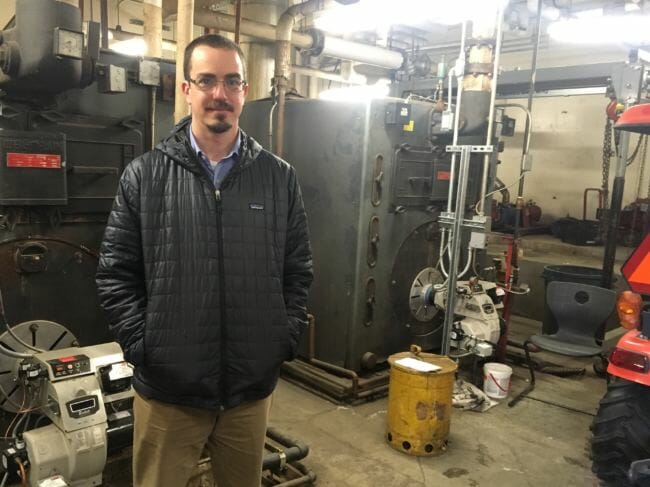
Kodiak is powered by almost 100 percent renewable energy through wind and hydro power. Most homes and businesses heat with fuel oil, but the local utility sees a shift to electric. To meet the growing demand, the Kodiak Electric Association (KEA) is planning a new project to boost the energy potential of Kodiak’s hydroelectric reservoir.
Kodiak Island Borough projects manager Matt Gandel stands in front of two fuel oil boilers at the Kodiak middle school that are taller than he is.
“We replaced the boilers at Peterson [Elementary School] a few years ago. They’re probably half of this size, and you get the same kind of efficiency,” he said.
Gandel says the typical life of a boiler is between 20 and 30 years, and these ones are pushing 35 years old.
He says they’ll switch out one of the boilers with an electric boiler in May.
“The electric boiler that will be here is more sophisticated than these fuel boilers,” he said.
The Kodiak Electric Association is paying to install electric boilers in the middle school, high school and the Kodiak Fisheries Research Center as part of the expansion of its Terror Lake hydroelectric project.
The expansion will catch snow melt and rain and transport it to the Terror Lake reservoir to increase its energy potential.
When it’s complete in 2020, the diversion will produce excess power and KEA will direct the energy to public buildings.
The utility struck a deal with the borough for a 10 percent discount on the excess hydropower for at least the first few years of the hydroelectric project expansion.
KEA president and CEO Darron Scott says the agreement benefits the borough, the school district, and the utility.
“We get to utilize our surplus power, the community gets to benefit from a lower cost of heating source, and we get to have cleaner air to boot,” he said.
Scott sees electric heating as the future in Kodiak.
He says a lot of new construction uses technology like electric boilers or heat pumps, which are now capable of functioning at even lower temperatures.
“You don’t have the potential of an oil leak at your house, you don’t have as significant a maintenance on the electric systems as you do on the fuel oil systems, and you’re hopefully gonna be saving money and more consistent costs over time,” he said.
Fuel prices rise and fall and Chris Rose, the executive director of the Renewable Energy Alaska Project in Anchorage, says the market is unpredictable.
“We have no control over the price of oil. Some kind of geopolitical event could occur and, all of a sudden, oil prices shoot over to $100 a barrel again.”
Rose says cities with lower electricity costs like Kodiak are good candidates for the transition to electric heat if the utility can handle the increased demand.
KEA’s expansion of the hydroelectric facility will help Kodiak do just that in the long run.
The diversion should boost the annual hydropower production by about 33 million kilowatt-hours, which is roughly 25 percent more energy.
KEA plans to start construction in June.
